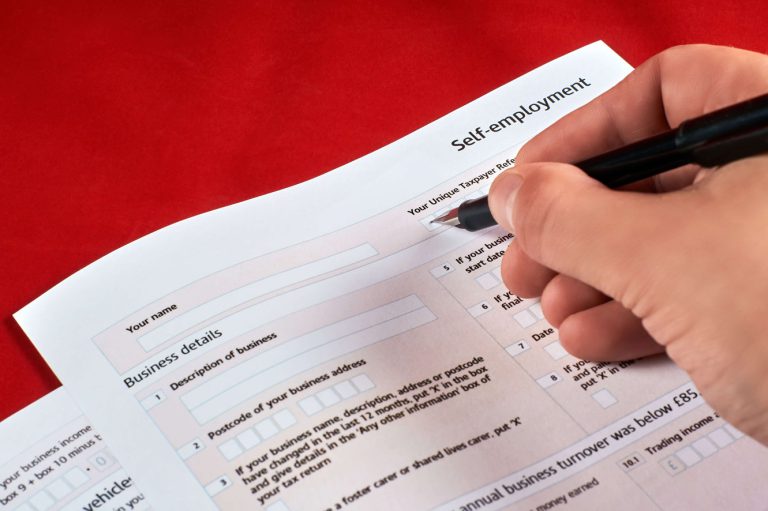You may have heard about changes to the tax rules for contractors, referred to as IR35. But what is IR35? What does it mean for contractors and clients? And what’s the latest position?
We’re going to look at the way the rules have changed and why. And we’ll explain what you need to do to avoid falling foul of the taxman.
What does IR35 mean?
So what is IR35? It’s shorthand for legislation that applies to the use of contractors. It’s been in force since 2000, but a number of changes have happened over the years.
The legislation was brought in to close a loophole in the tax system. Some employers were paying staff “off-payroll”, treating them as though they were independent contractors.
The staff in question set up their own limited companies or partnerships. Rather than receiving a salary, they received payments through those entities. That had advantages for both parties.
For employers, it meant they didn’t have to pay pension or National Insurance contributions for those staff. And while workers didn’t have employment rights like paid holidays or sick leave, they benefited from a lower rate of tax.
All this meant that the Exchequer wasn’t getting its share of the pie. New laws came into force in April 2000 that were intended to put that right. Further changes came into effect in 2017, and then in 2021.
IR35 gets its name from the number of the press release explaining the original rules. It was issued in March 1999 by the Inland Revenue (IR, now His Majesty’s Revenue and Customs, or HMRC).
How has IR35 changed?
Answering the question of “what is IR35?” becomes more confusing because it’s changed a number of times. The original legislation came into force in 1999. And it required workers to establish their own employment status as employees or independent contractors.
They would then charge for their work accordingly. If they were employees, they would deduct tax and National Insurance contributions from their fees. But in practice, the new rules were largely ignored.
So in 2017, the Government took action to prevent the continuing tax avoidance. The rules were changed to make it the responsibility of the organisations commissioning the work to determine whether workers were staff or contractors.
These new rules at first applied only to public sector bodies. But in 2021, they were extended to cover medium and large businesses in the private sector too.
In October 2022, the then Chancellor, Kwasi Kwarteng, announced a reversal of this approach. He argued that it represented a burden on businesses and was stifling growth. The rules, he said, would revert to those in place in 1999, with workers determining their own employment status.
But just a couple of weeks later, the new Chancellor, Jeremy Hunt, announced a U-turn. For the time being at least, then, the decision on whether workers are “in or out” of IR35 remains with the fee-paying client. So what does all this mean for contractors?
What happens if you are in IR35?
If you’re a contractor, the organisation you’re doing work for will decide whether you’re captured by the IR35 rules. (The exception is if you’re working for a small business, where the onus is on you.)
If you’re deemed to be inside IR35, meaning you’re an employee, you’ll have to pay income tax and National Insurance contributions. These will be deducted at source by the employer through their PAYE scheme.
But if you think being treated as an employee for tax purposes means you enjoy employment rights, guess again. You still won’t be entitled to benefits like paid holidays, sickness leave, or employer pension contributions.
How does IR35 affect contractors?
Some argue that companies take a risk-averse approach to IR35 decisions, fearing being pursued by HMRC. That’s not surprising, when even government departments using HMRC guidance have been hit with swingeing fines for getting it wrong.
That makes the environment for contractors more challenging. Some companies have decided not to use them at all, or to automatically treat them as being inside IR35.
If you are commissioned inside IR35, you’ll probably be looking at lower pay. That will reflect the cost to your client of paying your income tax and NI contributions. But you won’t get any employment benefits to make up for that.
How do I know if I am in or out of IR35?
For medium and large companies, it’s up to them to decide whether you’re in or out of IR35. Make sure you’re clear about their approach before you sign a contract.
If your client is a small company, the responsibility for deciding your employment status rests with you. Small companies are defined by the Companies Act 2006. As a minimum, they’ll have fewer than 50 staff and either a balance sheet or turnover below specified levels.
HMRC can look at IR35 decisions for up to six years afterwards. And if they decide they’re wrong, they can levy large penalties. If your client has made the decision, they’ll be liable to pay those. But if you’re working for a small company and have determined your IR35 status yourself, it will be up to you to pay.
In carrying out their checks, HMRC determines whether someone is working independently or whether they’re really a “disguised employee”. That can be a complex question, and it doesn’t just rely on the written contract. HMRC will look at all aspects of your working relationship.
What are the IR35 tests?

A number of tests are applied to determine what is IR35 work, and what sits outside those rules.
Are you an office holder?
If you’ve been appointed to a formal role in the organisation, particularly one with management responsibilities, you’re likely to be within IR35.
Could someone else do the work in your place?
If you weren’t available, would you be able to supply another contractor to complete the work? This test applies regardless of whether this would be possible in practical terms (e.g. because you didn’t know anyone with the right skill set).
If you could, even hypothetically, provide someone else to carry out the work, you’re more likely to be deemed outside IR35.
Do you control the way you provide your service?
The more control you exercise, the more likely you are to be deemed outside IR35. Different case law applies that illustrates what this looks like in practice. But if you’re able to determine where, when and how you work, you’re more likely to be outside IR35.
Is there an endpoint for your work?
This test (also referred to as “mutuality of obligation”) isn’t particularly strong. But if there’s an expectation that you’ll stop working at a particular point, it helps with the argument that you’re outside IR35.
That endpoint could be a date, or it could be a clear output marking the end of the project. Similarly, the right to walk away from the contract early is a mark in favour of the arrangement being outside IR35.
Do you carry the financial risk for your business?
Do you provide your own equipment, materials and office? Are you indemnified against any losses to your client that result from your work?
And do you have the kinds of things in place that would be expected of an independent business? That might include health and safety and other policies, VAT registration, or advertising campaigns.
The more financial risk you’re carrying in relation to your company, the more likely it is that HMRC will decide you’re outside IR35.
Are you part of your client’s organisation?
Are you included in their staff directory? Do you have a business card with their name on it? Can you use their gym or staff restaurant? If so, you’re likely to be considered part of their organisation and inside R35.
Do you work for only one client?
This is seen as another indication that you’re a “disguised employee” and should be inside IR35. Contracts that state you can’t work with competitor organisations, however, could still leave you outside IR35.
On the flip side, having more than one client doesn’t automatically mean you’re outside IR35. HMRC argues that a number of people work for more than one employer too.
Does your contract include a notice period?
Contracts that include periods of notice for termination can raise a red flag in terms of IR35. HMRC may view them as similar to periods of notice for dismissal for employment.
But allowing either party to end a contract immediately may not be practical. And in at least one legal case, the judge took the view that a contractual notice period didn’t make any difference to whether someone was an employee.
Did you intend to provide services when you signed the contract?
If the other tests don’t decide the matter clearly, the question of intent acts as a tie-breaker.
The issue here is whether you, and your client, intended to enter into a contract for you to deliver specific services. Or alternatively, whether the contract was for you to be available to be of more general service to the client. The first points to you being inside IR35, the second to being outside.
Recap: what is IR35?
That’s IR35 explained! But deciding whether the rules apply can be complicated for both contractors and their clients.
If you’re self-employed and entering into a big contract with a small business, it may be sensible to get independent advice. That could help you avoid costly penalties down the track.
Also read:
Can I claim my van insurance on my tax return?
Who pays the insurance on a company car?

